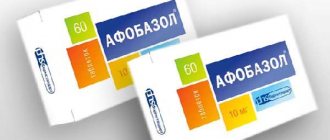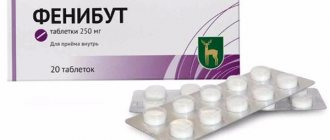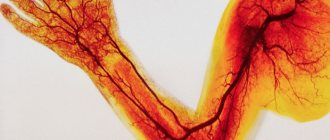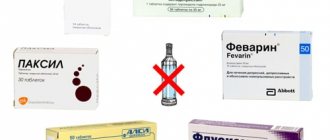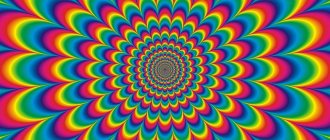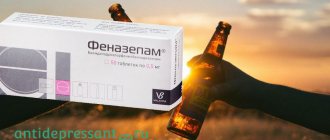In this article you can read the instructions for use of the drug Selectra . Reviews of site visitors - consumers of this medicine, as well as the opinions of specialist doctors on the use of Selectra in their practice are presented. We kindly ask you to actively add your reviews about the drug: whether the medicine helped or did not help get rid of the disease, what complications and side effects were observed, perhaps not stated by the manufacturer in the annotation. Selectra analogues in the presence of existing structural analogues. Use to treat depression, anxiety, phobias or fears in adults, children, and during pregnancy and lactation. Composition and interaction of the drug with alcohol.
Selectra is an antidepressant. Selectively inhibits serotonin reuptake; increases the concentration of the neurotransmitter in the synaptic cleft, enhances and prolongs the effect of serotonin on postsynaptic receptors. Escitalopram (the active ingredient of Selectra) practically does not bind to serotonin (5-HT), dopamine (D1 and D2) receptors, alpha-adrenergic, m-cholinergic receptors, as well as benzodiazepine and opioid receptors.
The antidepressant effect usually develops 2-4 weeks after the start of treatment. The maximum therapeutic effect of treatment for panic disorders is achieved approximately 3 months after the start of treatment.
Compound
Escitalopram oxalate + excipients.
Pharmacokinetics
Absorption is independent of food intake. Bioavailability - 80%. Plasma protein binding - 80%. Metabolized in the liver to active demethylated and didemethylated metabolites. After repeated use, the average concentration of demethyl and didemethyl metabolites is 28-31% and less than 5%, respectively, of the concentration of escitalopram. The metabolism of escitalopram with the formation of a demethylated metabolite occurs mainly with the participation of the isoenzymes CYP2C19, CYP3A4 and CYP2D6. In individuals with weak activity of the CYP2C19 isoenzyme, the concentration of escitalopram may be 2 times higher than in individuals with high activity of this isoenzyme. There are no significant changes in the concentration of the drug with weak activity of the CYP2D6 isoenzyme. Escitalopram and its main metabolites are excreted by the liver and most of them by the kidneys, partially excreted in the form of glucuronides.
Indications
- depression;
- recurrent depressive disorder;
- panic disorders (including agoraphobia);
- generalized anxiety disorder.
Release forms
Film-coated tablets 5 mg, 10 mg, 15 mg and 20 mg.
Instructions for use and dosage
Take orally, regardless of food intake. Depending on the indications, a single dose is 10-20 mg per day. The maximum daily dose is 20 mg. The duration of treatment is several months. When stopping treatment, the dose should be gradually reduced over 1-2 weeks in order to avoid the occurrence of withdrawal syndrome (dizziness, headaches and nausea).
Contraindications
- simultaneous use of MAO inhibitors;
- childhood and adolescence up to 15 years;
- pregnancy;
- lactation period;
- hypersensitivity to escitalopram.
Use during pregnancy and breastfeeding
The use of Selectra is contraindicated during pregnancy and lactation (breastfeeding).
Use in children
Contraindicated in children and adolescents under 15 years of age.
Use in elderly patients
Should be used with caution in elderly patients.
special instructions
Use with caution in patients with renal failure (creatinine clearance less than 30 ml/min), hypomania, mania, pharmacologically uncontrolled epilepsy, depression with suicidal attempts, diabetes mellitus, elderly patients, cirrhosis of the liver, a tendency to bleeding, simultaneously with taking medications that reduce the threshold for convulsive readiness, causing hyponatremia, with ethanol (alcohol), with drugs metabolized with the participation of isoenzymes of the CYP2C19 system.
What antidepressants can alcohol be combined with?
It is allowed to drink alcohol once a week in hangover-free doses (1 glass of vodka or cognac) only if you are taking antidepressants containing the following main active ingredients (the most popular trade names of drugs containing this active ingredient are indicated in brackets):
- ademetionine (heptor, heptral)
- St. John's wort (negrustin, deprim, life 600)
Try not to get carried away and not exceed the specified dose of alcohol, do not forget to then take a break from alcohol for at least a week. And don't take even small amounts of alcohol with any other antidepressants.
You can combine alcohol with these antidepressants in hangover-free doses, but not more than once a week.
Composition and dosage form
The therapeutic effect is provided by the active substance – cyanamide.
For better absorption by the body, the active compound is supplemented with:
- acetic acid;
- sorbic acid;
- sodium acetate trihydrate;
- distilled water.
The medicine is available in the form of drops intended for oral administration.
The colorless solution is characterized by a faint odor of acetic acid.
The medication is packaged in 15 ml dropper bottles. They are placed in 4 pieces in a cardboard box.
The medication is also supplied with an insert, which describes in detail the instructions for using the product.
The drug Selectra is produced in tablets. Substance content in one pill:
- Active ingredient: 5/10/15 or 20 mg escitalopram
- Additional ingredients: prosolv SMCC90/HD90 (CMK, E 551), primelose, talc, E 572
- Film coating: Opadry 03F28446 (white).
Drugs in the form of white ellipse-like pills, convex on both sides. On one surface there is a marking with the letter “E”, on the other there is a fault line. The edges of the tablet are beveled. The drug is packaged in 10 or 14 tablets in blisters made of PVC and aluminum foil. In a package of thick paper - 1/2/3 plates of 10 tablets. or 1/2/4 plates of 14 tablets. along with description and instructions.
Compound
The antidepressant is based on escitalopram oxalate.
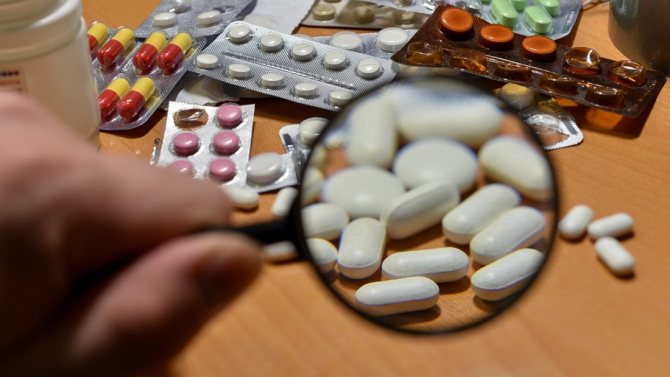
For better digestibility of the active ingredient, additives are used:
- croscarmellose sodium;
- prosolv SMCC90/HD90;
- magnesium stearate;
- talcum powder
Release form: film-coated tablets (composition: white opadry).
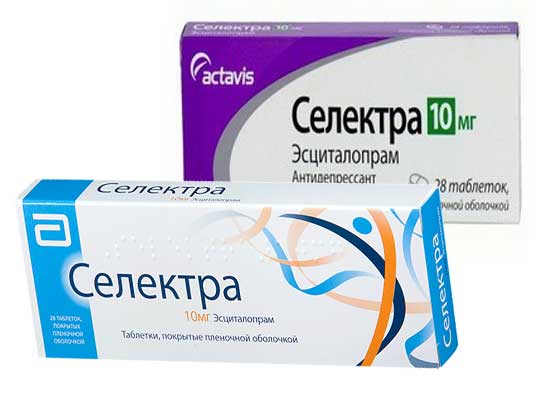
One package contains a certain amount of medicine: 10; 14; 20; 28; 56 pcs.
The cost of Selectra depends on the manufacturer and the number of tablets in the package ( 461-970 rubles for 28 pieces ).

The antidepressant is dispensed with a prescription in Latin, which complies with the rules for processing medical documents.
MAO inhibitors
Serotonin is a signaling substance (scientifically called a neurotransmitter). Brain cells exchange serotonin molecules to transmit information. In depression, there is an imbalance of serotonin.
Imagine that brain cells are throwing molecules around like balls. The point of contact between cell processes is called a synapse. When a cell receives a serotonin molecule, the signal is received, the cell no longer needs serotonin, and it gets rid of it. The removal of serotonin from the synapse is called reuptake.
SSRIs are drugs containing the following active substances (the most popular trade names of drugs containing this active substance are indicated in brackets):
- fluoxetine (deprex, portal, prozac, profluzac, fluval)
- sertraline (Aleval, Asentra, Deprefolt, Zoloft, Serenata, Sirlift, Stimuloton, Thorin)
- paroxetine (adepress, actaparoxetine, paxil, plisil, rexetine, sirestill)
- citalopram (Oprah, Pram, Siozam, Tsipramil, Citol)
- escitalopram (lenuxin, miracitol, selectra, cipralex, esipi)
- fluvoxamine (fevarin)
- venlafaxine (Velaxin, Velafax, Newelong, Efevelon)
- duloxetine (Cymbalta)
Alcohol cannot be combined with selective serotonin reuptake inhibitors because alcohol itself prolongs (extends) the action of intracerebral serotonin to a certain point, and is also an inducer of dopamine synthesis (like MAO inhibitors (monoamine oxidase inhibitors), also antidepressants and also incompatible with alcohol) .
Read interesting and funny articles on our blog!* A cheerful but stupid construction team. Story.
* A fun event for the New Year. Story.
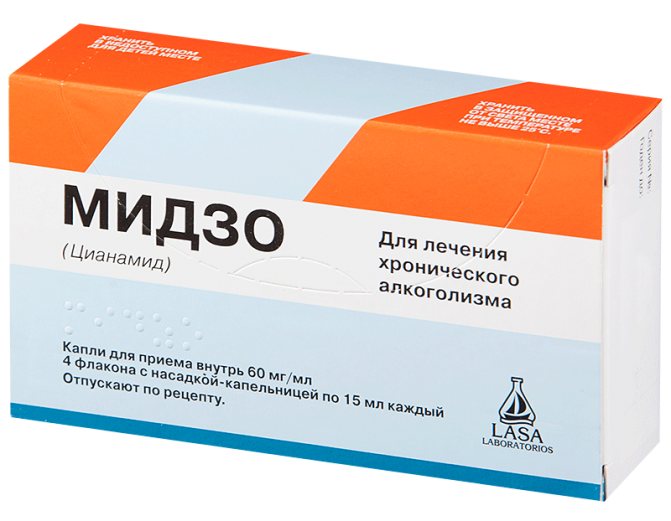
* Features of vintage wines.
These side effects, indicated in the instructions for use, can also develop with standard administration and dosage of antidepressants: due to the polymorphism of serotonin receptors, effects opposite to those expected can develop (depending on which receptors the antidepressant acts on - those it targets, or the opposite .
But potentially much more dangerous is the possibility of severe autonomic disorders: pressure surges, blood clotting disorders, secretory disorders, arrhythmia.
English scientist Andrew Herxheimer and New Zealand scientist David B. Menkes published an article in the Pharmaceutical Journal noting that many patients do not take seriously the warning that alcohol should not be combined with selective serotonin reuptake inhibitors.
Manufacturers of antidepressants explicitly do not recommend doing this on the instructions that are included in the boxes with medicines, but they rely on the results of studies on healthy volunteers in whose bodies their medicine does not interact with alcohol in any way.
It turns out that these warnings had not previously been confirmed by scientific research, and therefore did not convince either doctors or patients. Herxheimer and Menses described specific manifestations of pathological intoxication syndrome, which often causes serious consequences in patients taking SSRIs or similar antidepressants.
MAO inhibitors are active substances that can inhibit (that is, slow down the enzymatic reaction) the enzyme monoamine oxidase. These include drugs containing the following active ingredients (the most popular trade names of drugs containing this active substance are indicated in brackets):
- moclobemide (Aurorix)
- pirlindole (pyrazidol)
Alcohol should be avoided while taking MAO inhibitors to prevent the occurrence of tyramine syndrome and serotonin syndrome. Consumption of strong alcoholic beverages in combination with MAO inhibitors threatens depression of the respiratory center. When taking antidepressants of this class, you should adhere to a strict diet, because there are many foods and medications with which these drugs cannot be combined.
Consequences of combination
Taking MAO inhibitors at the same time with drinking can cause breathing problems. This effect can cause death. Respiratory arrest usually occurs during sleep, so the patient’s loved ones may not notice it.
It is also possible to increase blood pressure (blood pressure), which often results in a hypertensive crisis with the further development of circulatory disorders in the brain (hemorrhagic or ischemic stroke).
The combination of booze and tricyclics can increase the side effects of medications. The combination has a negative effect on liver function. Regular joint use causes the development of cirrhosis.
When taking selective serotonin reuptake inhibitors with alcohol, the side effects are not as dangerous. However, this combination will not bring anything positive to the body.
The combination can cause the following symptoms:
- thinking disorder;
- hallucinations;
- increased sweating;
- problems with the functioning of the heart muscle;
- changes in blood pressure.
Combining ethanol with psychotropic drugs causes liver cirrhosis, vegetative-vascular dystonia, arterial hypertension, and also increases the patient’s depressive state.
Medicinal properties
The therapeutic effect of the antidepressant is provided by the active substance escitalopram in the form of hydrochloride. It has the ability to suppress the reuptake of serotonin, increase the content of the neurotransmitter in the synaptic space, enhance and prolong the activity of serotonin at specific receptors.
The antidepressant effect appears 2-4 weeks after the first dose of the drug, develops progressively during treatment and reaches a maximum after 3 months of therapy.
Absorption of the substance does not depend on the time of eating. Peak plasma concentrations occur after approximately 4 hours. Metabolic processes occur in the liver, resulting in the formation of two active derivatives of escitalopram. Metabolic reactions involve isoenzymes CYP2C19, CYP2D6, CYP3A4.
Escilatopram and its derivatives are excreted from the body mainly by the kidneys, some by the liver. The duration of the withdrawal period lengthens in patients with age.
Tricyclic antidepressants
All tricyclic antidepressants have a similar chemical structure: three ring-shaped molecules joined together (though the molecules themselves can be completely different from one antidepressant to another). These include drugs containing the following active ingredients (the most popular trade names of drugs containing this active substance are indicated in brackets):
- amitriptyline (tryptisol, Elivel)
- clomipramine (anafranil, clominal, clofranil)
- imipramine (melipramine)
- tianeptine (coaxil)
- pipofezin (azafen)
We suggest you read: Furadonin and alcohol, what happens when combined

Tricyclic antidepressants themselves are too toxic to also poison the body with alcohol when taken. Tricyclics have many side effects, including quite severe ones, and the presence of alcohol in the blood can increase the likelihood of these undesirable effects or intensify existing side effects.
Video
When a person feels very bad, is tired of life and/or is fed up with certain things, he looks for a way out. He needs simple ways to immediately feel better. Here the consequences recede into the background, as long as it helps. They grab pills, drink alcohol, then... But let’s not rush. Read everything in order - find out what happens when you combine alcohol and antidepressants. For those who want more, immediately useful information on the links:
- What consequences will happen if you take a pill before after drinking alcohol? Here is a table of compatibility and effects of combined effects;
- How depression and alcoholism are connected - understand why you can’t stop drinking, why alcohol is so dangerous for depression;
- What is alcohol stress - here, how true is the statement that alcohol helps you relax and relieve stress;
- What good pills are there for nerves - here about Phenibut, and about Afobazole - there, the issue of combination with alcohol is considered.

Depression itself has long been considered by medicine as a separate mental disorder. This disease, of course, can be associated with other mental, psychological, social and even somatic diseases.
However, eliminating such connections does not always solve the essence of the problem. Depression can provoke such serious consequences that the person who suffers from it can have very sad consequences. In fact, in such a state he may descend to the point where he will try to end his life.
Although the state of depression may have been provoked secretly. So, even knowledge of these factors and psychological help cannot always prevent a person from attempting suicide. Doctors and researchers note that the number of stress factors in the modern world is only growing.
And even many opportunities, such as loans and mortgages, can turn into causes of depression. Scientific works note the following. Among the general mass of people, there are now often those who are prone from birth to depression.
This may be explained, for example, by dysfunction of the processes responsible for the production of serotonin and dopamine. Therefore, in the treatment of depression, not only various kinds of psychological and mental influences are used, but also all kinds of drugs. First of all, of course, antidepressants are special psychotropic drugs specifically designed to prevent or alleviate depression.
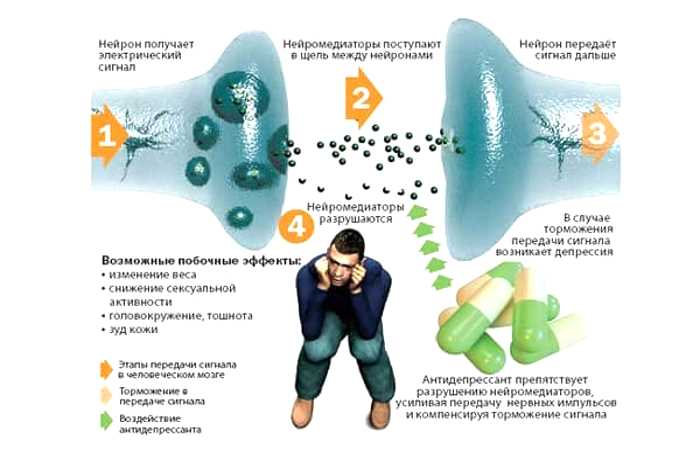
Why is alcohol often taken for depression?
What about alcohol? Contrary to what most people think, it is more correct to call it a depressant. Yes, yes - this is not a cure for a bad mood, which every drunkard is undoubtedly sure of. Although they drink it for very specific purposes, it exhibits a depressive effect.
A small dose actually makes you feel subjectively better for a while. At the same time, it is able to improve mood, relieve tension, and increase talkativeness. At the same time, it increases heart rate and increases blood pressure. In addition, at first it stimulates a person to take active action.
It seems to many that both alcohol and antidepressants are specially created in order for people to relax, unwind and forget about their work and escape from sorrows. How are things really going? Any alcoholic beverages manifest themselves as good stimulants of brain activity.
Their mental effect is such that it interferes and disrupts the normal activity of the brain. The exact dosage, as well as the effect, differs for each person. But in any significant quantities, alcoholic drinks, on the contrary, do not help either sleep or calm down. Believe it or not, this is the biggest problem for alcoholics and even drunkards after a binge... they simply cannot sleep!
Mode of application
The developers of the drug in the instructions for use recommend taking Selectra tablets once a day at any time, regardless of meals.
Depressive states
Therapy begins with a single dose of 10 mg, after which, depending on the body’s response, the need and possibility of increasing the dosage of the drug is considered. The highest daily dose allowed is 20 mg. The therapeutic effect appears after 2-4 weeks of use. To consolidate success, the patient is prescribed a maintenance course for another six months.
Panic states with or without concomitant agoraphobia
Treatment begins with daily intake of 5 mg, after which the dosage is increased to 10 mg. If there is a need, the amount of the drug can be increased to a maximum of 20 mg. The therapeutic effect appears after 3 months of use. The duration of therapy is determined individually and may take several months.
Elderly patients (65)
It is recommended to use the dosage of Selectra at half the usual dose: 5 mg per day. Maximum – 10 mg.
Kidney dysfunction
For mild or moderate forms of pathology, no dosage change is required. It is reduced to minimum values in case of serious condition of the patient.
Liver dysfunction
Use at the beginning of the course is 5 mg per day, after two weeks of therapy the amount of drugs can be increased to 10 mg.
Withdrawal of the drug
To avoid triggering withdrawal symptoms, the patient is prescribed a gradual withdrawal regimen by gradually reducing the daily dosage.
Precautionary measures
Selectra tablets are prohibited from being used in treatment for:
- High level of individual sensitivity to the main or auxiliary components
- Treatment course for MAOIs
- Children and adolescents under 15 years of age
- Pregnancy and breastfeeding.
Cross-drug interactions
Starting to take MAOIs too early after Selectra or simultaneous use leads to dangerous conditions, in particular serotonin syndrome. To avoid serious consequences, these drugs should not be used together. Treatment with Selectra can be started only after a 2-week break after completing the MAOI course.
Due to Selectra's ability to lower the threshold for seizure activity, the drug should not be combined with other drugs with the same effect (TCAs, SSRIs, neuroleuptics, Mefloquine, Tramadol).
When combined with medications containing lithium or tryptophan, the serotonergic effect and toxic effects of drugs containing lithium are enhanced.
An antidepressant cannot be used simultaneously with herbal remedies based on St. John's wort, since such a combination increases the number of side effects of both medications.
When combined with anticoagulants or drugs that affect blood clotting, the risk of bleeding increases. If concomitant use cannot be discontinued, treatment should be carried out with constant monitoring of coagulation parameters.
Escitalapram does not interact with ethanol, but, as when taking any drugs, combining the antidepressant Selectra and alcohol is prohibited. In addition, we must remember that alcohol-containing drugs and drinks have a depressant effect on the central nervous system.
The plasma concentration of escitalopram increases when combined with drugs that are inhibitors of cytochrome CYP2C19, drugs that are metabolized with the participation of the CYP2D6 isoenzyme (antidepressants, antipsychotic drugs).
Escitalopram doubles the amount of desipramine and metoprolol in the body when taken together.
The patient is warned about possible negative reactions caused by the combined use of alcohol and medication. The degree of their manifestation directly depends on the dose of the medication and the amount of alcoholic beverages consumed.
Mizo should be taken no earlier than 12 hours after drinking alcohol.
During long-term therapy, the attending physician will refer you to an endocrinologist to monitor the functionality of the thyroid gland. Research is carried out at least once every day. at 6 months.
In addition to the listed features of taking the drug, it is recommended to observe the following precautions:
- do not use drops after their expiration date;
- do not mix medicine into food without the patient’s knowledge;
- effective treatment is possible only with adequate motivation;
- with severe symptoms, symptomatic treatment is necessary to maintain the functioning of the cardiovascular system and respiratory organs.
At home, the pharmaceutical product should be kept in a locked cabinet. This will limit access to the medicine to children and animals.
Other groups of antidepressants
You can also mention antidepressants and other, less extensive groups, which are also often prescribed by doctors. For example, agomelatine (Valdoxan) stimulates melatonin receptors and blocks serotonin receptors.
Monoamine receptor agonists:
- mianserin (lerivon, miansan)
- mirtazapine (calixta, mirtazen, mirtazonal, remeron)
- trazodone (azona, trittico)
There are so many other antidepressants that it is impossible to list them all here. Be sure to read the instructions for the medications you plan to take. And if in the instructions for your drug in the “Pharmacological group” section you see the inscription “antidepressant”, then remember, while you are taking it, you should stop drinking alcohol.
Side effects and overdose
Clinical trials of the drug have shown that during therapy, negative reactions of the body may occur.
We suggest you read: Nitromint and alcohol
They are expressed in the form:
- drowsiness;
- fatigue;
- skin rash;
- sensations of tinnitus;
- leukopenia.
After 1-2 weeks from the start of treatment, symptoms gradually decrease. In case of increasing disturbances, it is recommended to consult your doctor.
Adverse reactions also include manifestations caused by a combination of cyanamide and alcohol. The patient must be warned about them.
If the dosage norms are violated, the body responds – increased side effects.
To eliminate pronounced manifestations, symptomatic treatment is carried out:
- gastric lavage;
- acceptance of sorbent.
The use of the drug may be accompanied by undesirable conditions manifested by disorders of individual organs or internal systems. Basically, the antidepressant Selectra provokes adverse reactions in the first weeks of therapy, then as treatment progresses, their intensity decreases and occurs less frequently.
- CVS: dizziness, general weakness, sleep disturbance (insomnia or drowsiness), convulsions, tremor, motor coordination disorder, serotonin intoxication (high temperature, tremor, myoclonus, motor restlessness with emotional manifestations of fear, panic, anxiety), hallucinations, confusion , panic attacks, blurred vision, orthostatic hypotension.
- Gastrointestinal tract: nausea, vomiting, dysgeusia, dry mouth, poor appetite, bowel dysfunction (diarrhea/constipation).
- Endocrine system: decreased ADH secretion, galactorrhea.
- Genitourinary system: impaired ejaculation, erectile dysfunction, anorgasmia, difficulty urinating.
- Skin and subcutaneous tissue: rashes, itching, Quincke's edema, capillary hemorrhages under the skin.
- Manifestation of allergy: anaphylaxis.
- Laboratory data: hyponatremia.
- Other: heavy sweating, high temperature, pain in joints, muscles.
In addition, if you abruptly stop taking Selectra, withdrawal syndrome may develop. Manifests itself in the form of severe dizziness, headaches, and nausea.
Taking the drug too often or using Selectra in large dosages causes a negative reaction from the body in the form of increased side effects. Oversaturation of the body with an antidepressant manifests itself in the form of:
- Dizziness
- Trembling
- Drowsiness
- Confusion
- Seizures
- Rapid heartbeat
- ECG changes
- Arrhythmias
- Difficulty breathing
- Vomiting
- Metabolic acidosis
- Hypokalemia
- Some patients may experience acute renal dysfunction.
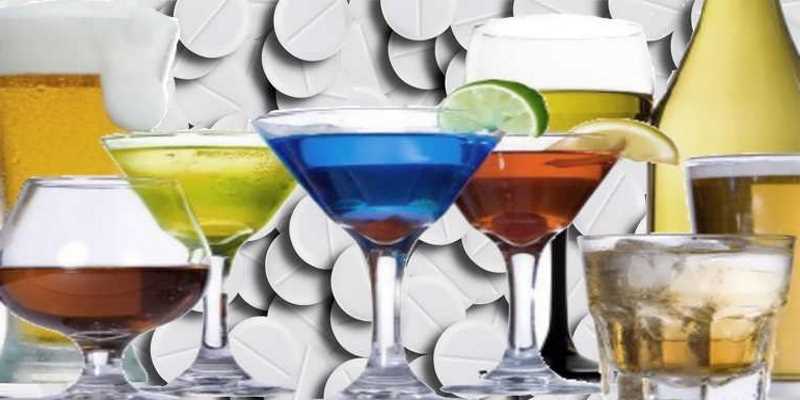
To eliminate an overdose, symptomatic and supportive therapy are used, since there is no antidote to escitalopram yet. Throughout treatment, the condition of the cardiovascular system and respiratory organs must be monitored.
Side effects
It is prohibited to use an antidepressant on your own due to the presence of special instructions for the use of the drug and possible side effects that were recorded during the study of the drug.

The identified effects are classified according to vital systems:

- Gastrointestinal tract: dry mucous membranes, decreased appetite, nausea, stool disorders, vomiting.
- Central nervous system: physical weakness, sleep disturbance or drowsiness, dizziness, convulsions, trembling fingers, complications after taking medications that affect the metabolism of serotonin in the nervous system.
- Cardiovascular system: decreased blood pressure when changing body position due to insufficient blood flow to the brain.
- Endocrine system: spontaneous secretion of milk from the mammary glands (not associated with the lactation period), decreased secretion of antidiuretic hormone.
- Genitourinary system: decreased potency, weakened libido, anorgasmia, urinary retention, impaired ejaculation.
Other side effects include:
- myalgia;
- sinusitis;
- hyponatremia;
- hyperthermia;
- increased sweating, etc.
Selectra analogues
Synonyms and possible substitutes: Lenuxin, Cipralex, Esipi, Elitsey Ku-Tab, Adepress, Aleval, Aleval, Zoloft,
Paxil
Glaxo (France)
Price: (10 tables) – 200 rub. (30 tablets) – 682 rubles, (100 tablets) – 2066 rubles.
An antidepressant based on paroxetine. It is used for the treatment and prevention of depression of all types, anxiety disorders, OCD, panic and social phobias, PTSD. The dosage regimen and duration of therapy are determined individually.
Pros:
- Returns vitality
- Improves sleep.
An analogue of the remedy in question is Colme.
It is also made from cyanamide. The medicine works identically to Mizo.

Hypothetical substitutes for tablet medications could be:
- Lidevin(RUB 1,279);
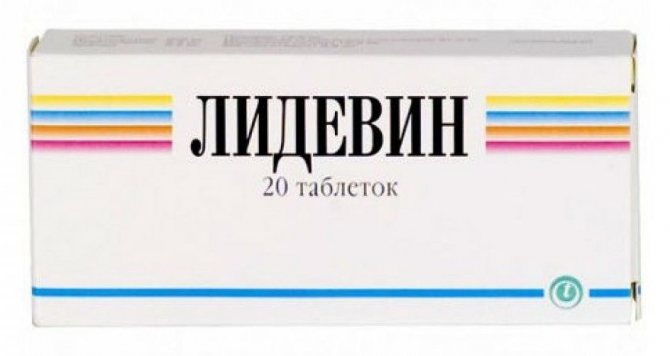
- Antikol (4200 rub.);
- Esperal (RUB 1,466);
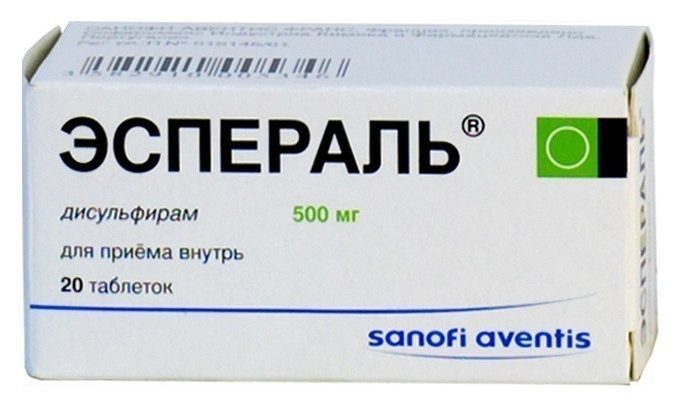
- Teturam (261 rub.).
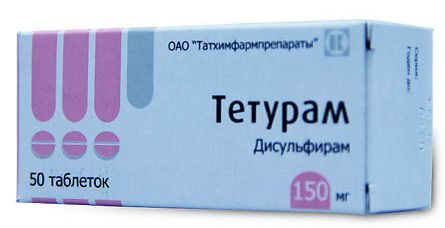
The active substance of these medications is disulfiram. This is an analogue of cyanamide.
The chemical compound causes similar side effects, but is less effective. This is explained, first of all, by the release form. The drops begin to act 10 times faster, as they reach the systemic bloodstream in a matter of minutes.
Substitutes with other therapeutic effects are also commercially available. But the direction of the medicine's use in medicine is identical to Mizo.
Alcobarriers Kampral relieve psychological cravings for alcohol.
Analogs
You can replace Selectra with other means of similar action:
- Asipi (from 382 rub.);
- Escitalopram (from RUR 193);
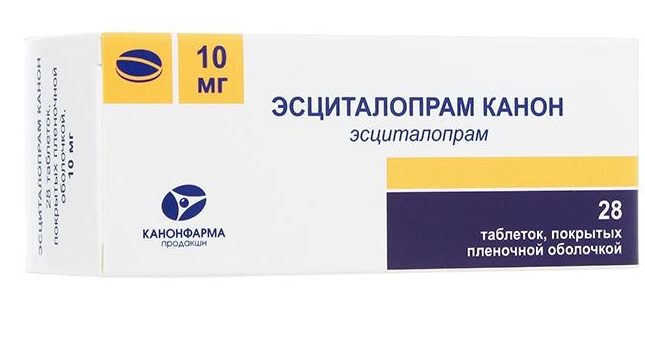
- Elicea (from 536 rub.);
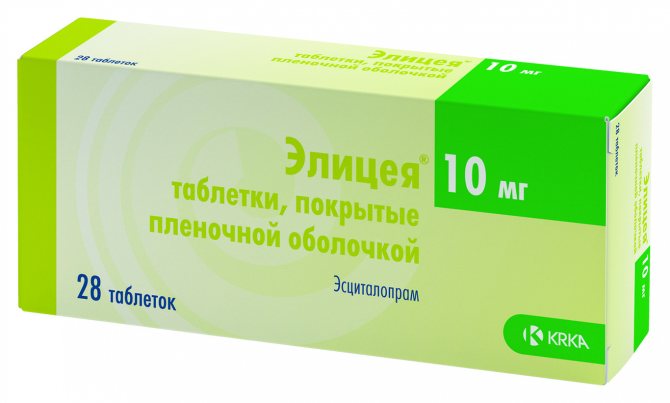
- Elicea Ku-tab (from 541 rub.);
- Escitalopram Canon (from RUR 265).
The same group with Selectra also includes more affordable antidepressants:
- Amitriptyline – 14.80 rubles;
- Apo-Fluoxetine – 26.60 rubles;
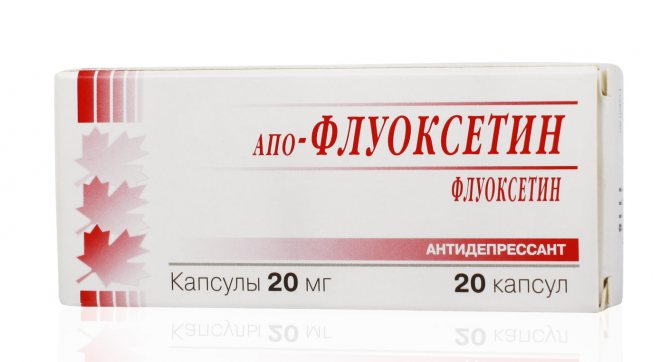
- Fluoxetine – 25.30 rubles;
- Amitriptyline Nycomed – 47.60 rub.
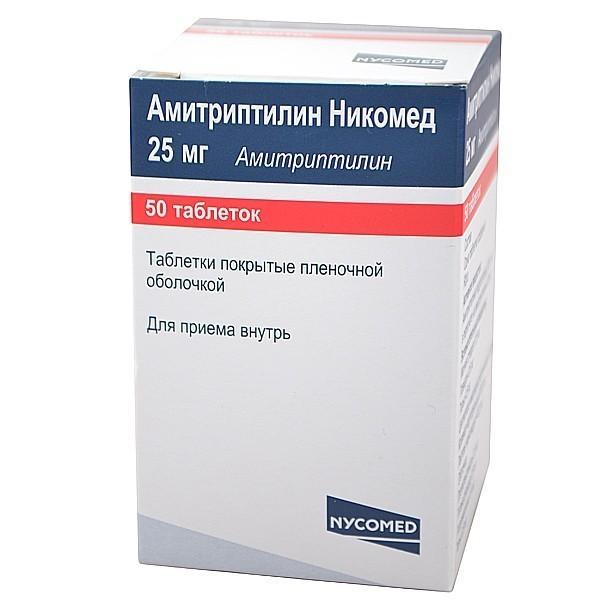
The privilege to select an analogue and make changes to the treatment regimen remains exclusively with the attending physician.
The duration of taking pills is sometimes six months, but thanks to the pharmacological properties of the active substance, it becomes possible to return to a full life.
Pharmacology
Cyanamide is an active compound that blocks the synthesis of the enzyme acetaldehyde dehydrogenase.
During the reaction, the active component catalyzes the oxidation of acetaldehyde into acetic acid.
This is an important aspect in the treatment of alcohol or drug addiction, given the fact that acetaldehyde, as its concentration increases, provokes nausea, heart rhythm disturbances, increased nervous excitement, fear and other manifestations.
The active component begins to act 45-60 minutes after taking the medication.
Duration of action is about 12 hours.
Contraindications
Before the appointment, the specialist examines the characteristics of the patient’s physical condition, clarifies information about the presence of other diseases in order to exclude contraindications.
The antidepressant is not recommended for use in the following cases:
- with hypersensitivity to the active component (escitalopram);
- during pregnancy and breastfeeding;
- in combination with MAO inhibitors, serotonergic drugs.
Reviews from those who took the drug
Based on the mechanism of action, the following types can be distinguished:
- sedatives;
- tranquilizers;
- neuroleptics;
- antidepressants.
- Sedatives are prescribed for sleep disorders, nervous tension, and increased irritability as sedatives that regulate the activity of the central nervous system. The action is based on enhancing inhibitory processes in the nerve cells of the cerebral cortex.
- Tranquilizers relieve internal tension, fear and anxiety. They have a fairly pronounced relaxing and hypnotic effect. Tranquilizers are prescribed for neuroses of various origins, before surgery as part of anesthesia, and also for alcoholism as part of a complex treatment for addiction. You can take such tablets for no more than a month to avoid addiction.
- Neuroleptics are prescribed to people suffering from serious mental pathologies. These may be congenital or acquired disorders such as schizophrenia, manic-depressive psychosis, or reactive disorders caused by shock. The drugs have a strong sedative effect and inhibit the activity of the central nervous system.
- Antidepressants are prescribed for a general depressed, apathetic state to increase the activity of the central nervous system to normal levels. Designed for long-term use - from six months to a year, the effect can be noticed after 2-3 weeks of taking the tablets.
I tried to quit drinking for over 12 years. But it was not possible to advance beyond 2 months of abstinence. After that, he went on another binge.
I began to take it absolutely consciously on the advice of the doctor Mizo. The first violation of the ban on simultaneous consumption of alcohol and drops changed my perception of the world.
I remembered the wild pain in the sternum, the difficulty of breathing, the sharp increase in pressure for a long time, especially when the next desire to raise a glass arose. So imperceptibly, in an emotional struggle with myself, a year flew by, then another.
Now I understand that the wild craving for alcohol was a mistake. It's a pity for wasted time.
My wife suggested Mizo for alcoholism when the question of divorce arose due to my heavy drinking. I decided to take this step because I didn’t understand how I would live without my wife and children.
We suggest you read: Why do alcoholics get swollen faces?
Having experienced the consequences of simultaneously taking drops with alcohol once, I realized that I couldn’t pass the test again. Every time, even at the sight of alcohol, nausea set in and my body literally began to twist.
I was able to navigate a difficult path to recovery, where the constant desire to drink was interrupted by terrible memories of physical pain. I haven't taken the drug for over a year now. The spirit became stronger, the craving disappeared. There is only a desire to catch up.
Reviews from doctors
Alexander Mikhailovich, psychotherapist with 22 years of experience:
A pronounced effect is observed after 2-3 weeks of taking the tablets.
An important positive factor is the availability of the medicine - reasonable price, no problems with purchase.
Yulia Nikolaevna, psychiatrist with 16 years of experience:
In comparison with other drugs included in the same group, it is better tolerated by patients and has a minimal percentage of side effects.

The achieved result is maintained after a course of treatment. The low toxicity of the composition practically eliminates the possibility of poisoning from tablets if the dosage is exceeded. The drug is used in practice not only by psychiatrists, but also by neurologists and other general practitioners in medicine.
Reaction to alcohol
When Mizo is combined with alcoholic drinks, an aversion to ethyl alcohol is developed, and motivational factors for its use are neutralized.
Consequences of simultaneous use of the drug and alcohol:
- pulsation in the cervical region, head;
- skin redness;
- increasing nausea;
- loss of vision clarity;
- chest pain;
- profuse sweating;
- difficulty breathing.
More serious consequences of combining the drug with alcohol require medical attention:
- respiratory depression;
- increase in blood pressure;
- collapsed state.
To eliminate severe side effects, symptomatic therapy is prescribed, aimed at maintaining the functioning of the cardiovascular and respiratory systems. The patient is administered antihistamines intravenously.
Mizo promotes the development of a negative conditioned reflex that manifests itself in relation to the smell and taste of alcoholic beverages.
When can you drink after taking antidepressants?
After completing the course, you are allowed to drink only after two weeks. If you drink alcohol earlier, serious disruptions in the functioning of internal organs are possible. Therapy should be started only after the body has been cleansed of the decomposition products of ethyl alcohol.
If the start of treatment was preceded by a feast, it is necessary to maintain an interval of 2-3 days. This period of time will be enough to remove dangerous toxins. In this case, the patient will minimize adverse reactions and improve the quality of therapy.
Combination with alcohol
Combining neuroleptics or tranquilizers with alcohol, as a rule, is not only not necessary, but often not even possible. Because in some cases they are prescribed to patients in special institutions. When mixed with ethanol, the depression of the central nervous system will be so strong that a person can fall into deep sleep, fraught with cardiac arrest.
But the likelihood of taking antidepressants and alcohol at the same time is very high for the following reasons:
- you have to take pills for a long time, which includes quite a few holidays, as a result of which the therapeutic regimen is disrupted;
- In a depressed state, many find solace in alcohol.
What are the consequences of drinking ethanol-containing drinks if you are taking antidepressants, and which of these tablets can be mixed with alcohol?
The action of antidepressants is aimed at restoring the processes of production and regulation of serotonin, dopamine, and norepinephrine in the brain. Each drug has its own active ingredient, so compatibility of drugs is impossible. They can be changed only after 2-3 weeks.
Antidepressants do not act as destructively on the liver and kidneys as antibiotics, but the breakdown products of the drugs are still eliminated by these organs. And antidepressants and alcohol together further increase the burden on them.
Sertraline and Cipralex are recognized as the most popular and effective drugs. These are the latest generation antidepressants. Principle of action: they inhibit the reuptake of serotonin by the nerve cell that sent it, as a result of which its concentration increases (SSRI class).
Antidepressants and alcohol - the right approach to use
Modern pharmacology has a wide range of antidepressants, most of which should not be taken with alcohol. To avoid the development of negative reactions that can sometimes threaten the patient’s life, before taking any of them, it is important to carefully study the instructions for use. You should not rely on the opinions of people who are incompetent in this matter. If in doubt, you should clarify all important points with a narcologist.
Treating depression is a fairly lengthy process. During this period, some patients often have a desire to drink. Antidepressants and alcohol are not the best combination, which can lead to the development of serious pathologies. To understand when you can resume drinking alcohol, you need to understand the principle of action of the medication.
Sertraline
Sertraline is one of the four best antidepressants in the latest generation line, and is also a typical representative of the most commonly prescribed group of SSRIs. It is prescribed mainly for obsessive-compulsive disorders, that is, the inability to get rid of obsessive thoughts and constantly repeating actions.
The active substance is sertraline hydrochloride. Metabolized in the liver, excreted by the kidneys. After three months of taking Sertraline tablets, the maximum effect is achieved.
In the instructions, the manufacturer directly states that it is inadmissible to take the drug together with alcohol. If you have liver or kidney diseases, taking an antidepressant is also not recommended.
Alcoholism constantly stimulates the release of serotonin. Sertraline also prolongs the action of this neurotransmitter and further stimulates the synthesis of dopamine. Due to simultaneous use, competition arises for compounds for which these substances are catalysts. This means an increase in not so much the direct effect of the tablets as the side effect. The following reactions occur:
- hallucinations;
- mental disorder;
- pressure surges;
- secretory disorders;
- arrhythmia.
Antidepressants with a serotonin reuptake effect help with alcoholism in the initial stages of quitting alcohol. Since alcohol dependence is largely caused by a lack of serotonin, and drugs such as Sertraline stabilize its level, we can talk about a replacement effect.
Selectra and alcohol: compatibility
Alcohol and antidepressants are incompatible, so you must stop drinking alcohol during treatment.
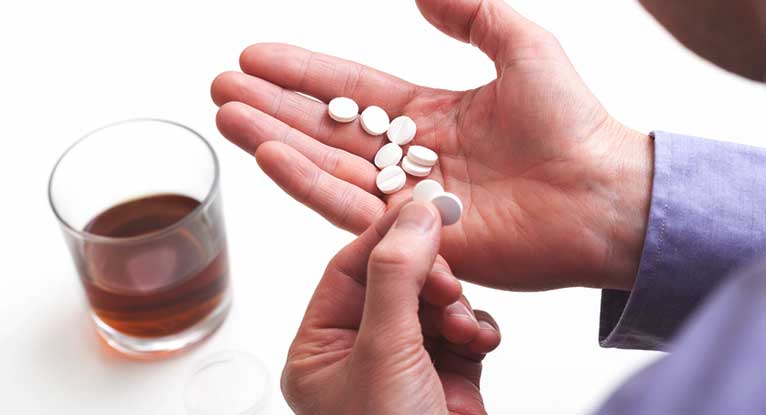
Ethanol reduces the effect of the active substance; instead of stabilizing the psycho-emotional background, there is an increase in depression.
The consequences of such a tandem are:
- insomnia;
- attacks of tachycardia;
- sudden change of mood;
- severe headaches;
- increased irritability.
The kidneys and liver also suffer; increased work on processing and eliminating toxins disrupts their function.
Instructions for use
The use of a pharmacological agent is permitted only after consultation with a specialist who will explain the principle of operation of the drug, the extent of its effect on the human condition, and warn about possible negative reactions.
Mizo is taken orally according to the following scheme:
- frequency of administration per day – 2 rubles;
- single dose – 12-25 drops;
- the interval between doses is at least 12 hours;
- The duration of therapy is determined individually.
Restrictions on use
Before you start using drops, you need to familiarize yourself with the contraindications.
The medicine is not recommended for use by dependent people who have the following health conditions:
- respiratory failure;
- allergy to the components of the composition;
- erosive and ulcerative lesions of the gastrointestinal tract (acute phase of the disease);
- diabetes;
- pathology of cardiac activity (severe degree);
- kidney and liver dysfunction;
- epilepsy;
- periods of pregnancy and lactation;
- elderly age.
